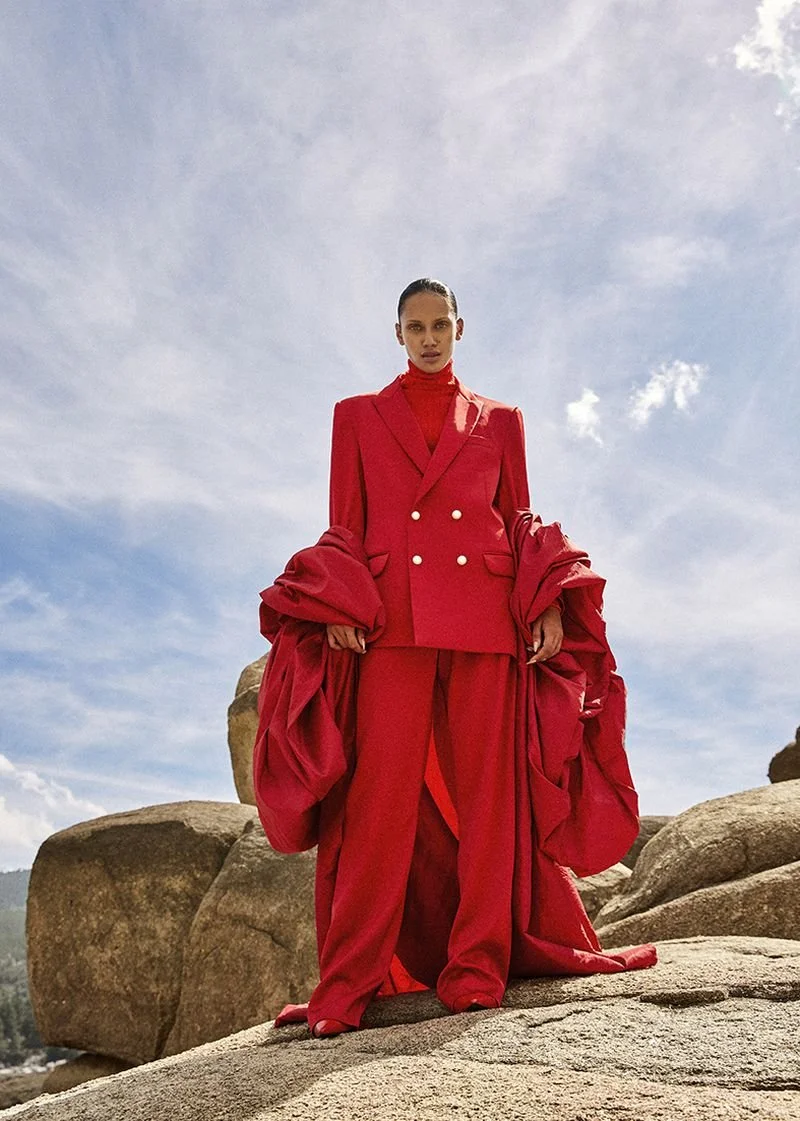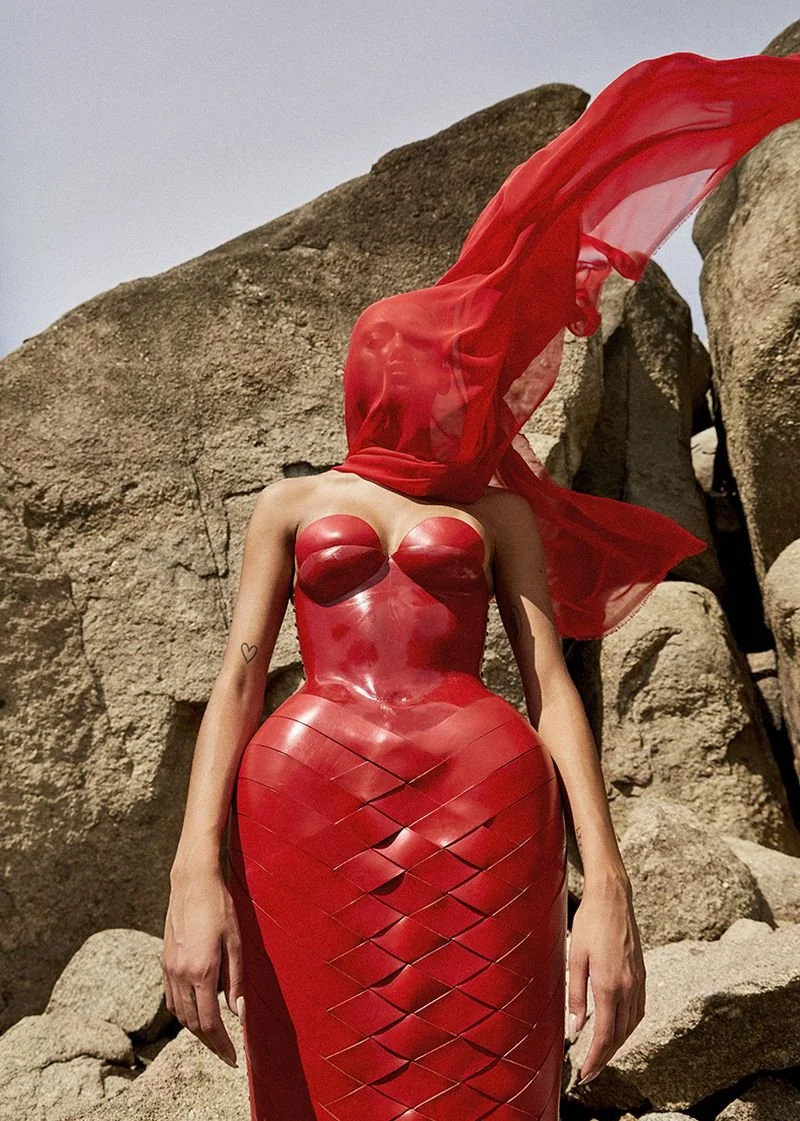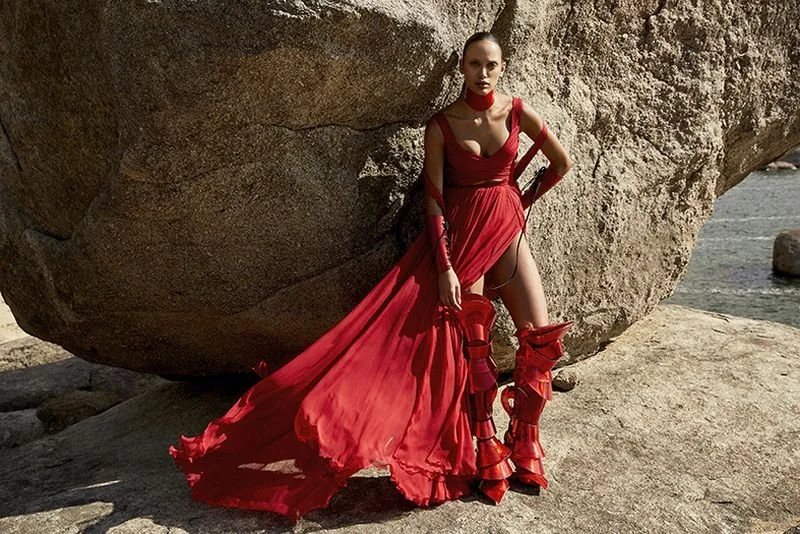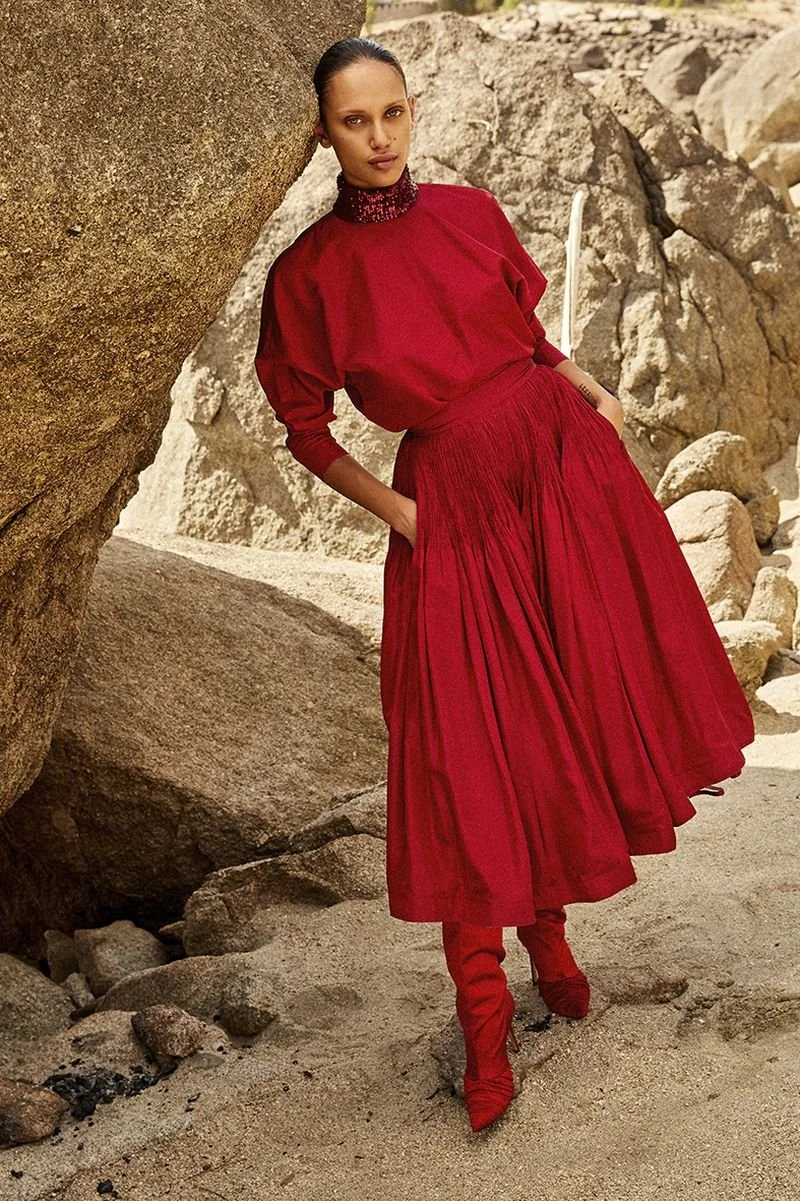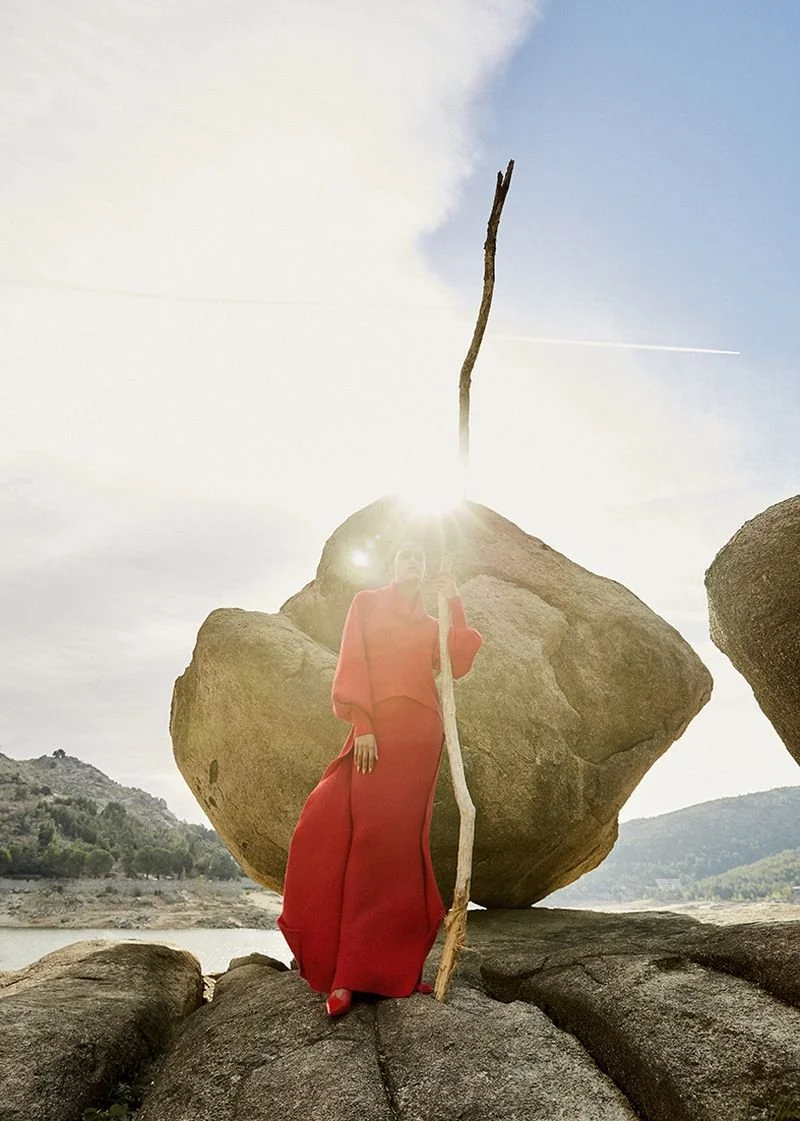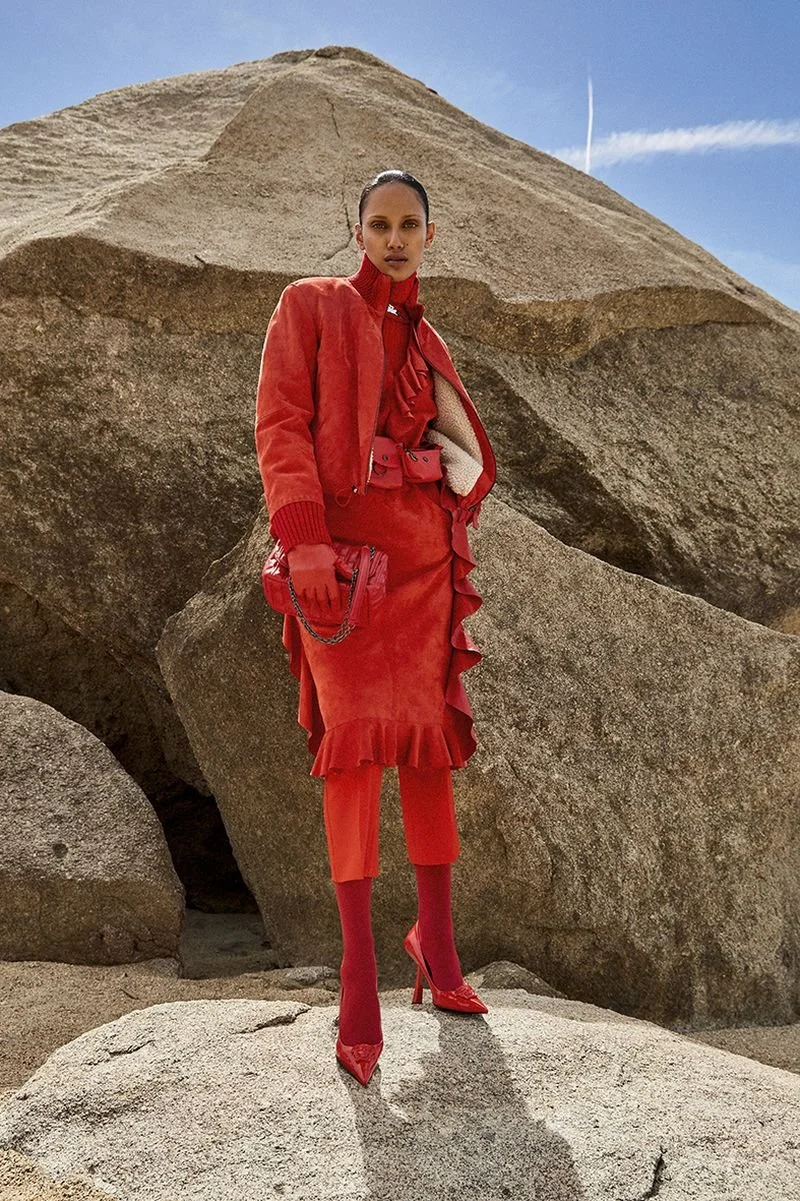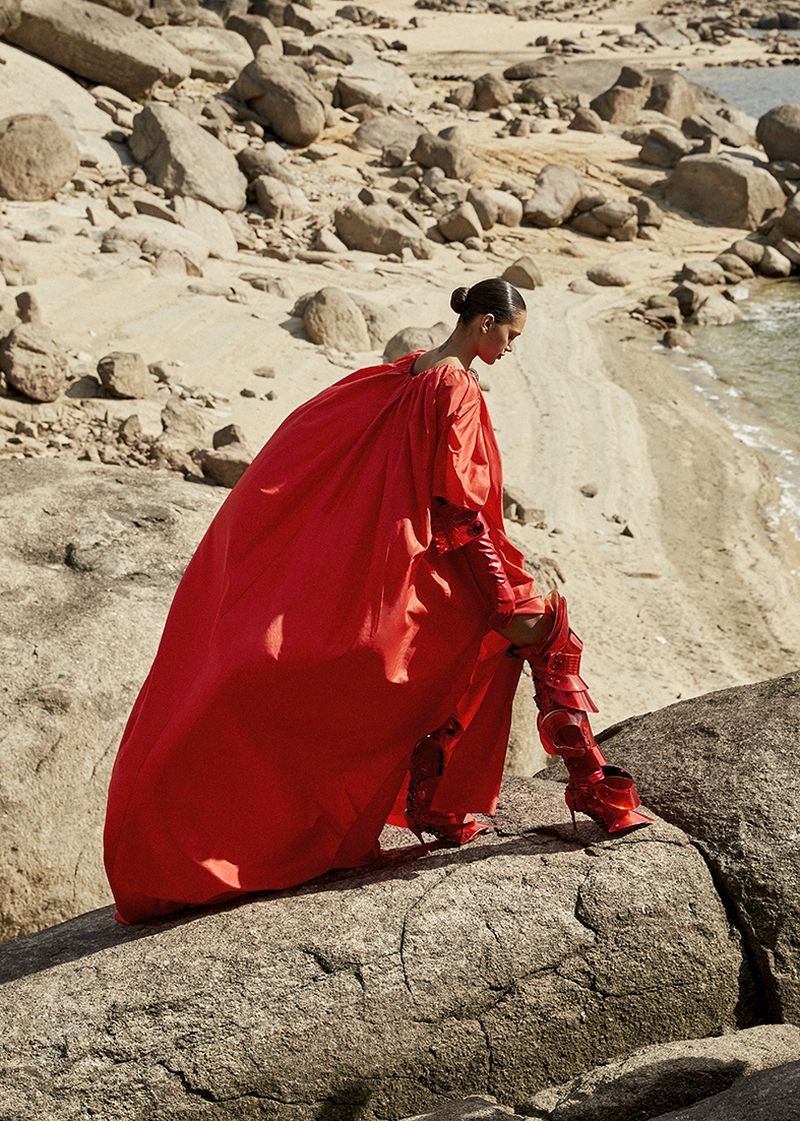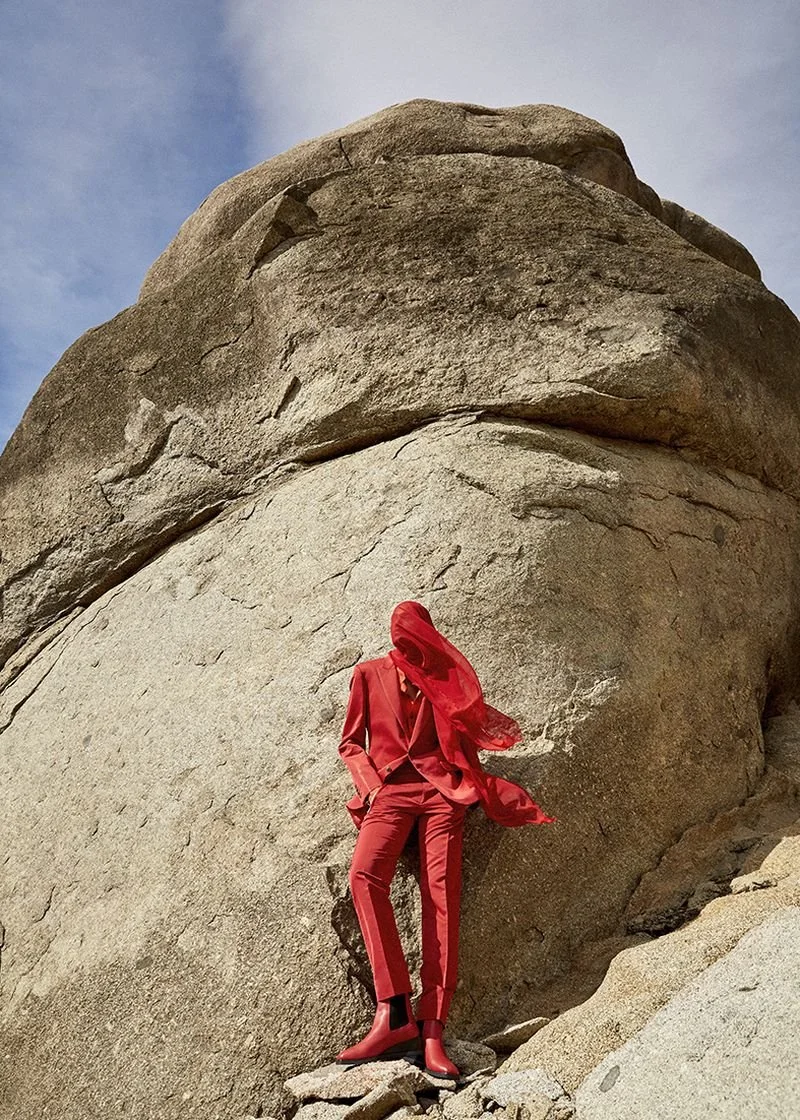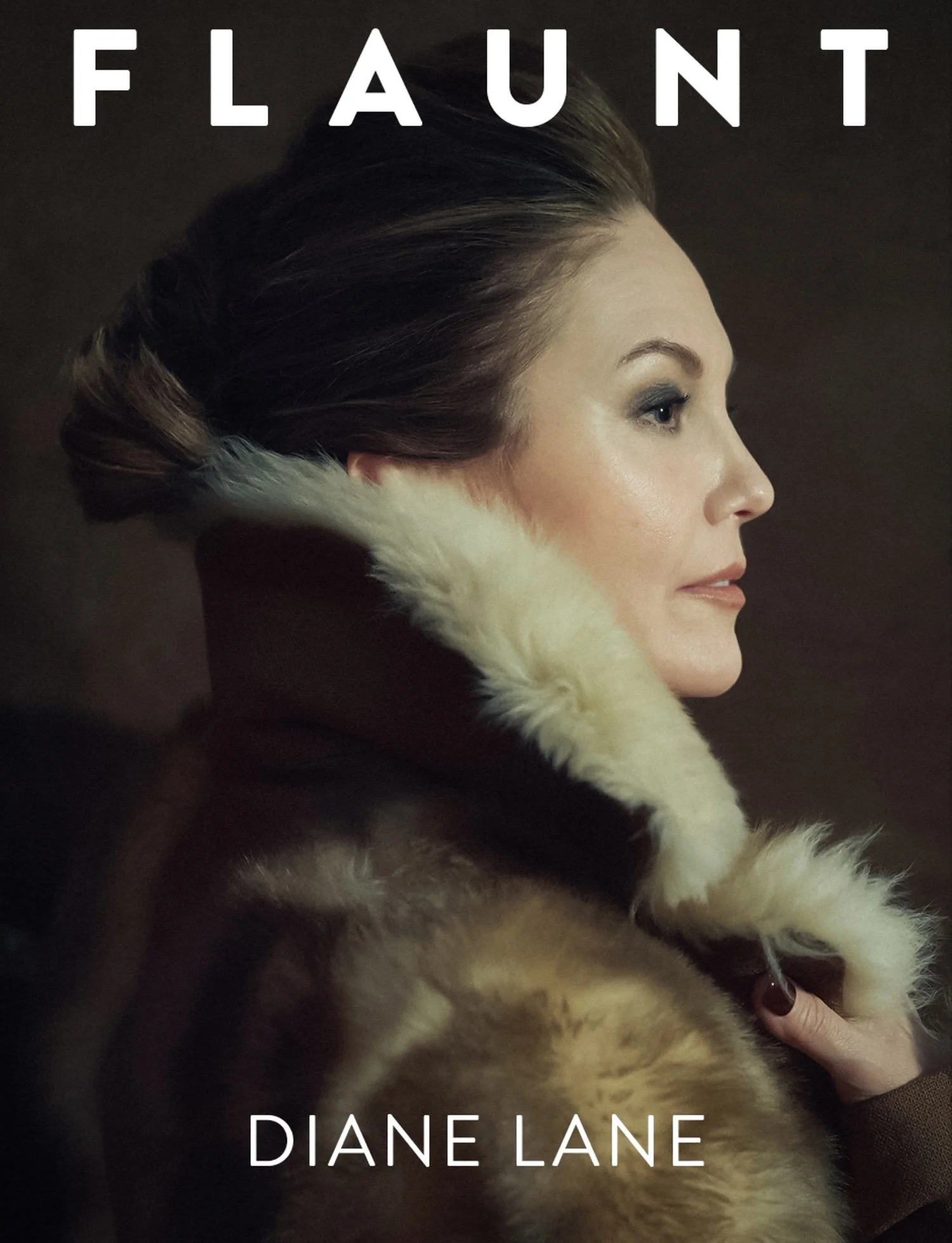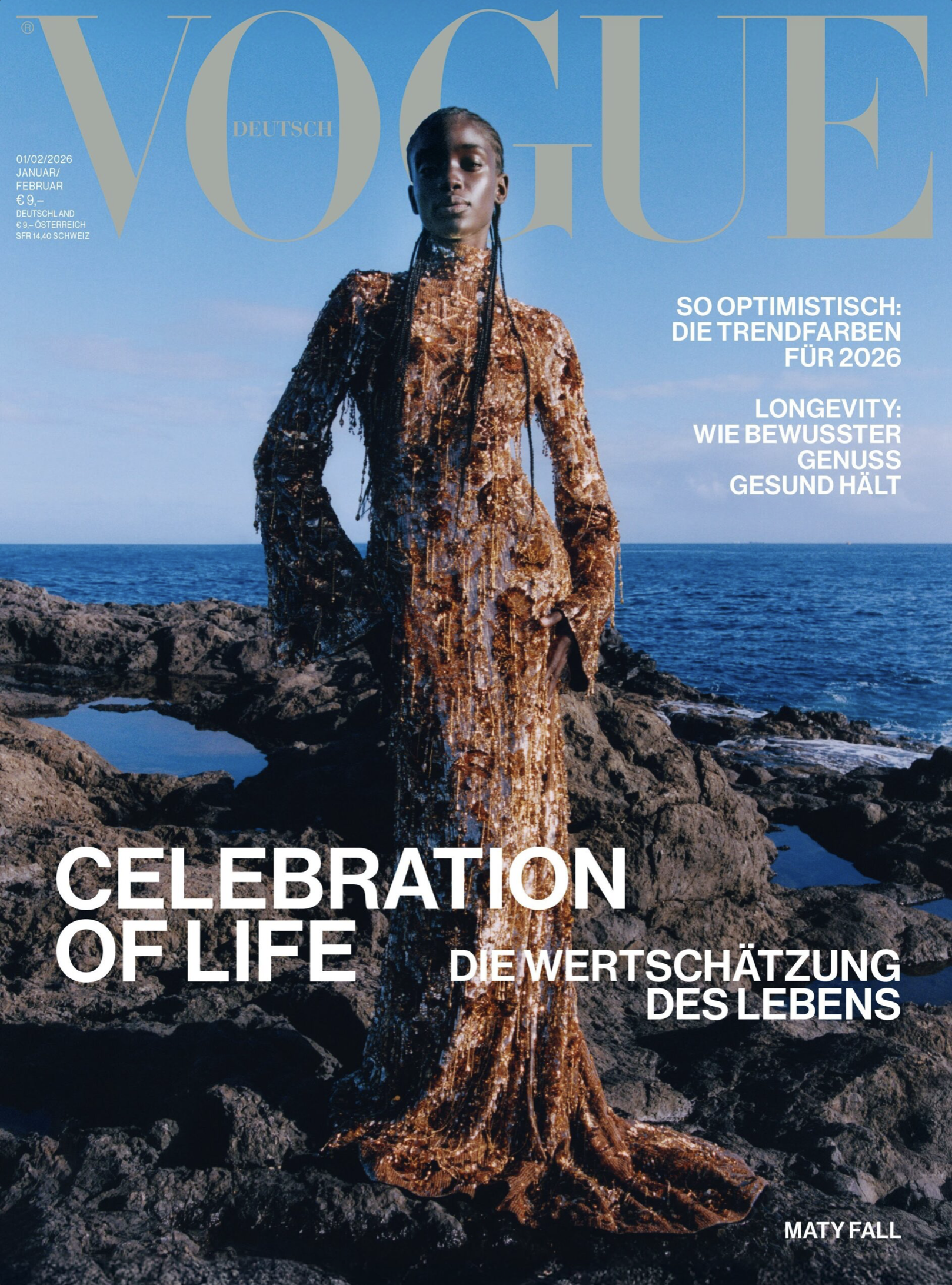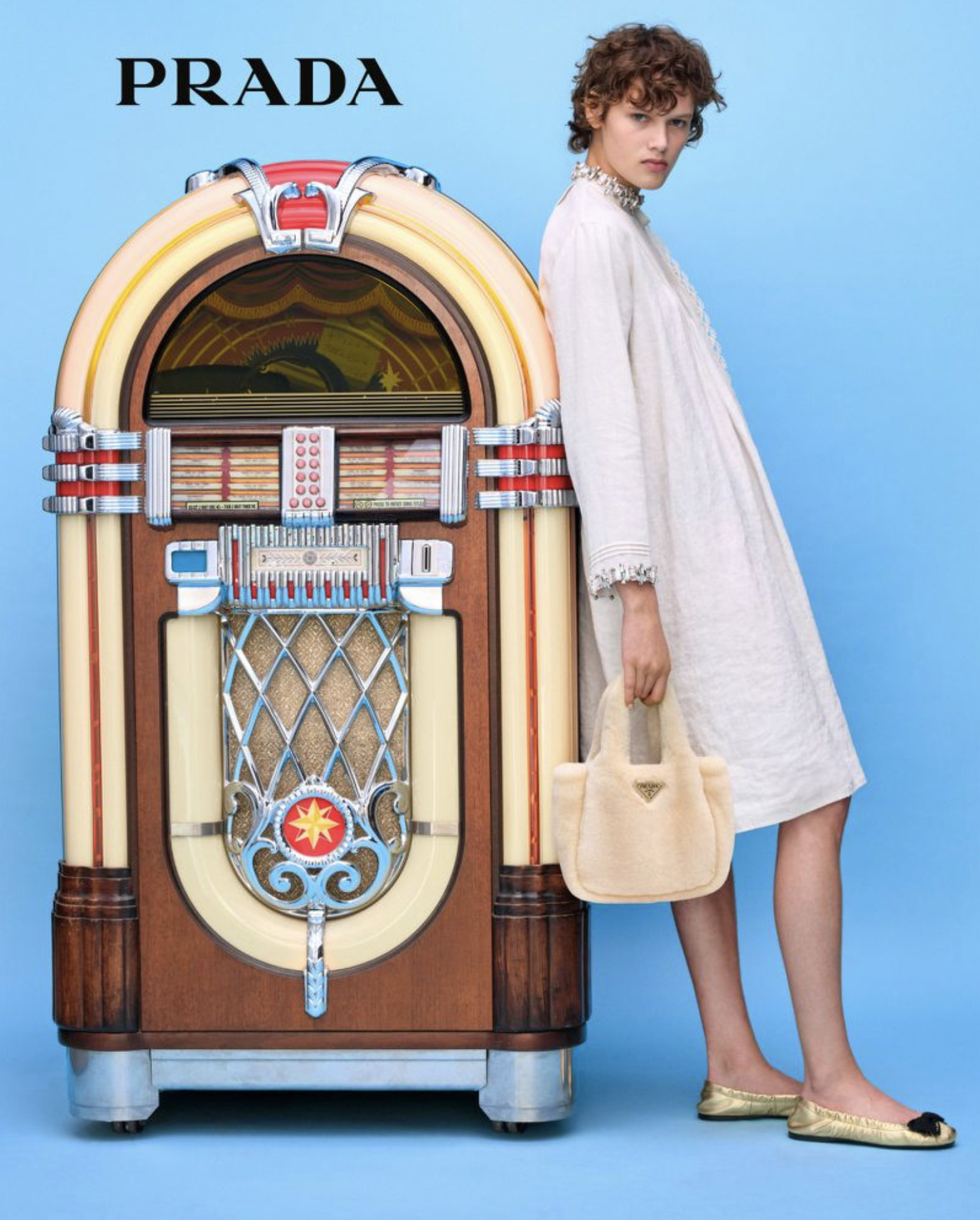Rocio Ramos Seizes the Power of Cardinals for Marie Claire Mexico and LA
/Photographer Rocio Ramos [IG] captures unadulterated-red, fashion passion in the October pages of Marie Claire Mexico and Latin America. Model Dalianah Arekion poses in primal, earth-goddesses elegance styled by Abraham Gutiérrez.
Most fashion media will promote the color red as symbolizing new energy and interest in living with the latest seasonal wardrobe. The message is consumption-oriented — which is understandable, especially if we are looking at the latest, earth-loving sustainable fashion buys.
We doubt that is the case here — that we are looking at sustainable fashion. But there are even higher principles at play in these images. AOC knows for a fact that artist and photographer Rocio Ramos is on our wave-length, and she likes the writing her images inspire.
So we will move out on red, into the fast lane.
Red Symbolism
The color red is most often associated with a passion for living and an embrace of love, but also carnal pleasures. Red is known as an emotionally-intense color that enhances human metabolism and increases respiration rate, while raising blood pressure. The impact of the color red on the human body has been seriously studied.
Culturally-speaking we are in a red-alert moment that transcends fashion runways and embraces the duality of competing narratives about our very humanity.
Red is the color of fire and blood, one often associated with energy, war, power and danger. Red is considered to be aggressive and fierce, but also grounding. In the world of 7 chakras, red is the root chakra, and while it’s easy enough to dismiss red as primitive with its positioning on the chakra chart, it is also responsible for our sense of security and stability.
When apes first stood tall and began walking into humanity, their root chakra was in high gear — literally. Rocks and caves were homes to humanity before we created mobile structures made of mammoth tusks. The setting for Rocio Ramos’ fashion story is perfect, because it embraces the necessities of security, survival and being rooted as the very foundation of our lives.
Seizing the Color of Cardinals
Red is also unifying as the color of blood. Surely you’ve heard the expression “we all bleed the same color red” as a statement of our common humanity.
From this AOC perspective, women who wear red are dangerous in many ways, because we often challenge fundamental, but politically-created beliefs that humanity does NOT bleed the same color blood.
In seizing the color of cardinals for our own bodies, we are transgressors against the status quo. We are inspired and challenged onwards by the orisha Oya, a Yoruba warrior-goddess who stands with one foot in Yoruba-speaking Africa and another in northern Brazil. She is my own Orisha, revealed to me in a mind-blowing event in Brazil in 2019.
Oya’s own religion Candomblé, was banned until 1970 in Brazil. In the interests of simplicity, consider Candomblé to be folk Catholicism — except that women have real power in the religion that has been on the move publicly in Brazil since 2005.
To Fight or Not To Fight
It will be women’s choice whether or not we seize the power of red in a transformational way. Increasing numbers of us must be willing to step out of the shadows and find our backbone — our inner Oya. As a daughter of Oya — the word used to describe me on that fateful day in Brazil in 2019 — it is our duty to rise against the prevailing winds of white nationalism worldwide.
By definition, in accepting my own identity as a daughter of Oya, I am acknowledging the leadership of women of color in this obviously-coming “religious holy war”. As scary as these times are, I am personally propelled forward with the understanding that if red is the lowest charka — the root chakra on the chart — purple is the highest.
Getting to Purple Status
It is true that we can’t advance to purple status, without rising through blue — and we all know that blue is for boys, right? Except that it wasn’t, at least here in America.
Only at the beginning of the 20th century, did some stores begin suggesting ‘sex-appropriate’ colors for newborn boys and girls. Initially, pink was the color for boys. Girls wore blue. That is truth, and I will pick up that narrative soon with much more proof than Britannica.
Frankly, I’m as surprised as you are with this discovery. In understanding that American girls wore blue and boys wore pink, I see Oya’s goddess color of purple on the horizon — if only we can rise together in unity. It’s akin to my long-ago discovery that abortion was not only legal in colonial America, but it was widely advertised in newspapers and on city lamp posts. The facts of history are rewritten always to support the ideological interests of the most powerful among us. At least in liberal democracies, tensions around power and truth arise because arguments that would get me beheaded in Saudi Arabia are more easily expressed in America.
Make no mistake, though. I have been in police protection for a year over a crazed white dude trying to kill me for supporting Planned Parenthood. So we’re speaking of degrees of danger and repression here in America — at least for this white woman. The police were very supportive of me and took the reality of my danger very seriously.
We know that in many cases, such protection would not be offered to a woman of color — straight, gay, lesbian, bi, trans — I’m sure I’ve made a grievous error in this word lineup, but you get my point. ~ Anne

